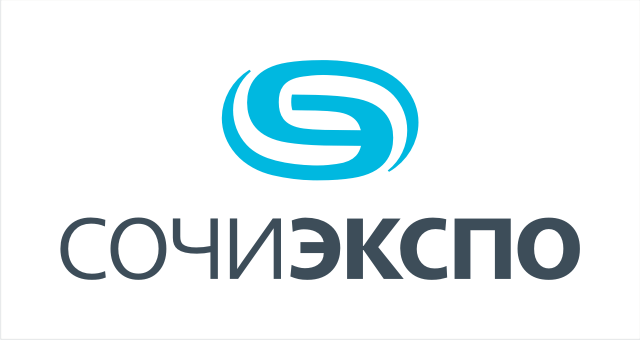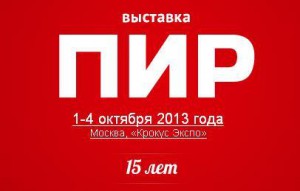The grocery retailer Lenta has entered the Moscow region. The first of the company’s stores in the capital opened on a 3,000 m2 site in 1stOstankinskaya Street the end of April 2013. The store is also the first establishment in the new supermarket format. In the past Lenta operated hypermarkets only.
Another Lenta store in the city hypermarket format opened in the Makcity shopping centre in Balashikha (in the Moscow Province) the end of May 2013. This outlet takes up 4,500 m2. Overall, in the next 3-4 years the retailer intends to launch about 10 stores in the region. In April 2013 Lenta had 57 active hypermarkets in 32 Russian cities.
Author Archives: CrispConsulting
Russia’s grape imports record low in first 10 months of 2012/13
Russia imported record low 357,000 tonnes of grapes in the first 10 months of the season 2012/13, a decrease of 6% from the same period of the previous season, according to the official statistics. Turkey, Uzbekistan and Moldova led in grape exports to the Russian Federation. At the same time, Russia’s grape imports in April 2013 reached 21,000 tonnes, a half more year-on-year.
Source: www.freshplaza.com
Expofood Sochi 2013
IX specialized exhibition-fair of food
October 17-20, 2013
Exhibition halls in the Maritime Terminal in Sochi
The purpose of the exhibition – Providing support for businesses in the sanatorium-resort industry and catering facilities of Sochi-quality food products, the expansion of ties between the Russian and foreign companies, with the Krasnodar Territory.
SECTIONS Exposition:
– Meat and meat products. Meats. Bird. Egg
– Fish and Seafood
– Dairy products. Cheeses
– Groceries. Cereal products. Pasta, condiments, spices
– Gastronomy. Products for restaurants. Ready-made meals
– Juice, water. Soft drinks
– Vegetables, fruits
– Vegetable fats
– Tea, coffee, cocoa
– Confectionery products. Snacks. Nuts and dried fruits. Bakery products
– Canned Food. Ketchup, sauces, salads
– Frozen / chilled products. Semi-finished goods
– Alcoholic beverages (spirits, wine, brandy, low-alcohol beverages)
– Healthy food. Dietary Products
For more information see www.sochi-expo.ru
Amount of apples exported from China to Russia decreased
According to Federal State Statistics Service (Rosstat), from July to April 2012/13 China shipped to the Russian market 104 thousand tons of apples, which is 7% lower than during the same period the season before.
It should be also noted that the import of apples to Russia from China for 10 months of the season was the lowest for this period.
However, despite the decline in exports of apples to Russia, China managed to be third biggest supplier to Russia third season in a row. 6 seasons ago, China was the leading supplier of fruit on the Russian market.
Source: www.freshmarket.ru
Russian import of fruit and vegetables: 8 billion dollar market
Russia is an important sales market for fresh fruit and vegetables. Every year the Russian market is worth an import value of almost 8 billion dollars. The volume is around 8 million tonnes. Last year the import was a little lower than that of the record year 2011. This decrease can be attributed to the smaller import of vegetables, mainly that of onions. In reality, the import of fresh vegetables has been stagnating since 2008, whereas the import of fresh fruit grew until 2011 and stabilised last year (see tables 1 and 3 to 6).

The Russian market is very important for Holland. However, according to KCB figures the sales of Dutch products decreased dramatically last year. If the KCB registration is correct, the decrease of Dutch product from 192,000 to 127,000 tonnes is completely due to the decrease in the export of onions (table 9). Besides Dutch product there is also a considerable amount of foreign product transported to Russia through Holland. Based on the statistics it is difficult to get a good image of the size of the total trade between Holland and Russia.
As the trade mainly goes through Lithuania, the import of fruit and vegetables (incl. re-export) from Holland in Lithuania gives the best image of the amounts concerned. According to Eurostat figures it was 370,000 tonnes in 2012: 198,000 tonnes of vegetables and 172,000 tonnes of fruit (table 15). Almost all of this will have ended up on the Russian market (Lithuania only has 3.5 million inhabitants and Russia has over 140 million).
Russian production stable
Russia itself produces huge amounts of vegetables: especially cabbage, tomatoes, onions and carrots. The fruit production is considerably smaller and watermelons and apples are the two most important products. The production has been reasonably stable for the past few years (table 2).

For the total import, fruit is more important than vegetables. Over the past few years the fruit import has shown a steady rise to around 6 million tonnes in recent years. The import of vegetables was over 2 million in 2011, but decreased last year.

Fruit: Import mainly bananas and apples
In terms of fruit, apples and bananas are the leading import products. In 2011 the import of bananas reached a peak for the time being. In 2012 less bananas were imported. The import of apples, on the other hand, was biggest in 2012 and knocked bananas off the top spot. Soft citrus, oranges, pears, grapes, peaches/nectarines and lemons are the products which form the middle. Out of these products, only the import of peaches peaked in 2012 (tables 3 and 4 and 18 through 23).
Bananas come almost exclusively from Ecuador. For apples there was a huge increase in the import from Poland in 2012. The import from Moldavia and China and a number of other countries greatly decreased. Holland is a small player in the Russian apple market and in 2012 there was also a decrease. According to the KCB the export of Dutch apples fell from 11,400 tonnes in 2011 to 7,850 tonnes in 2012. According to the Russian import statistics 8,400 tonnes of apples were imported from Holland. Lithuania’s import statistics add up to an import from Holland of 13,700 tonnes. Pears are the main product imported from Holland to Russia. The KCB adds up to and export of 53,000 tonnes of Dutch pears in 2012.

For Holland, however, the Russian vegetable market is more important than the fruit market. Last year the export of Dutch vegetables dropped greatly, but this was due to the strong decline in the export of Dutch onions to Russia. In 2011 there was 86,000 tonnes and in 2012 only 23,000 tonnes. The export of other Dutch vegetable products to Russia has shown a very slight downward trend in recent years. Tomato is the largest of the rest and came near 20,000 tonnes for the first time. Carrots, white cabbage and peppers are, at a distance, the other vegetable products going to Russia. The export of cabbage decreased greatly in 2012 (table 9).
Russia’s big vegetable supplier is, however, Turkey, but the package that this country supplies, is very limited. Three quarters of it is tomatoes (table 42). China is second on the list. Last year the import from that country did suffer a big drop. Important products that China supplies are: tomatoes, onions (a lot less in 2012 than in previous years), carrots and garlic. Israel and Poland are also still ahead of Holland as suppliers. Israel is big in carrots and peppers and Poland is big in cabbage and mushrooms. (tables 42 to 46).

Source: www.freshplaza.com
X5 Retail Group: centralizing the managment was a mistake
X5 Retail Group said that centralizing the management of all the formats was a mistake.
Now, the company has finished the separation of management functions of “Karusel”, “Perekrestok” and “Pyaterochka.”
According to newspaper “Vedomosti”, all X5 Retail Group supermarkets will share legal, financial, and security departments, but each format will have its own logistics and commercial departments.
Source: www.retailer.ru
PIR 2013
PIR. Hospitality Industry
October 1-4, 2013
Crocus Expo, Moscow
The ‘PIR. Hospitality Industry’ trade fair is the main exhibition project in the HoReCa segment in Russia and CIS.
Each year it becomes a meeting place for restaurateurs and hoteliers, chefs and confectioners, suppliers, investors, journalists and all those willing to keep up with the latest trends of the hotel and catering business.
Organizer: PIR Information project supported by the Restaurateurs and Hoteliers Federation as well as the National Chefs’ Guild.
In 2012 850 companies from 25 countries were exhibited at the show. There were more than 45 000 visitors.
For more information see www.exhibition.pir.ru
New Billa establishment opens in Moscow
Last week the German grocery retailer the REWE Group has opened its 68th Billa supermarket in Moscow, on Shchelkovskoye motorway. The new store has a trading area of 500 m2 and offers more than 5,000 SKUs. The outlet has thus become the 91st Billa supermarket in Russia overall. This was the first establishment launched by the company in 2013. The next will be designed to strengthen the company’s presence in the city.
As Retail Update Russia reported in March this year, Billa announced 10-15 new stores in Russia in 2013. Last year, the chain’s Russian division reported sales worth €640m ($825m).
Source: www.russiaretail.com
X5 posts lower profit
Russian retailer X5 Retail Group N.V. posted lower profit for the first quarter, but net sales rose from last year.
The group’s net profit for the quarter slipped to $65.1 million from $66.3 million a year ago. Profit before tax slid to $86.6 million from $90.3 million. However, EBITDA rose 3.7 percent to $284.2 million.
Net sales, in US Dollars terms, rose 7.5 percent to $4.160 billion. However, net sales, in RUR terms, grew 8.0 percent, which the group primarily attributed it to an 8.1 percent increase in net retail sales, resulting from organic store additions, price inflation, the positive performance of maturing stores added over the past two years and on-going promotional activities.
Source: www.freshplaza.com
WorldFood Moscow 2013
WorldFood, Moscow, 16-19 September, 2013
22nd International Food & Drinks Exhibition
Expocentre
Over the last 20 years, WorldFood Moscow has grown to become a major meeting place for the food and drinks industry and a vibrant source of productsfor the Russian market. Exhibitors are grouped in nine main sectors, ensuring visitors can easily find products of interest, compare them and talk to their manufacturers.
Each year, more than 50,000 specialists from various countries visit the exhibition. WorldFood Moscow attracts much interest from Russian specialists, including representatives of wholesale and retail companies from 43 cities.
69 countries are represented at the exhibition. International producers account for over 40% of all exhibitors at WorldFood Moscow. A significant part of the exhibition is taken up by the national pavilions of individual countries.
For more information see www.world-food.ru


